Hypertensive Eye Exam
In New York City
At Manhattan Eye, we look for hypertensive retinopathy on a hypertensive eye exam.The retina is the tissue layer located in the back of your eye. This layer transforms light into nerve signals that are then sent to the brain for interpretation. When your blood pressure is too high, the retina’s blood vessel walls may thicken. This may cause your blood vessels to become narrow, which then restricts blood from reaching the retina. In some cases, the retina becomes swollen.
HYPERTENSIVE EYE EXAM NYC
HYPERTENSIVE EYE EXAM FAQS
What to know about hypertensive eye exams?
The retina is the tissue layer located in the back of your eye. This layer transforms light into nerve signals that are then sent to the brain for interpretation. When your blood pressure is too high, the retina’s blood vessel walls may thicken. This may cause your blood vessels to become narrow, which then restricts blood from reaching the retina. In some cases, the retina becomes swollen.
Over time, high blood pressure can cause damage to the retina’s blood vessels, limit the retina’s function, and put pressure on the optic nerve, causing vision problems. This condition is called hypertensive retinopathy.
You probably won’t have any symptoms until the condition has progressed extensively and that is why it is crucial to get yearly exams. By the time you have hypertensive retinopathy, possible signs and symptoms include:
· Reduced vision
· Eye swelling
· Bursting of a blood vessel
· Double vision accompanied by headaches
What causes hypertensive retinopathy?
Prolonged high blood pressure, or hypertension, is the main cause of HR. High blood pressure is a chronic problem in which the force of the blood against your arteries is too high. The force is a result of the blood pumping out of the heart and into the arteries as well as the force created as the heart rests between heartbeats. When the blood moves through the body at a higher pressure, the tissue that makes up the arteries will begin to stretch and will eventually become damaged. This leads to many problems over time.
The arteriosclerotic changes of hypertensive retinopathy are caused by chronically elevated blood pressure, defined as systolic greater than 140 mmHg and diastolic greater than 90 mmH. Hypertension is usually essential and not secondary to another disease process. Essential hypertension has multiple modifiable environmental factors contributing to the disease. However, secondary hypertension can develop in the setting of pheochromocytoma, primary hyperaldosteronism, cushing’s syndrome, renal parenchymal disease, renal vacular disease, coarctation of the aorta, obstructive sleep apnea, hyperparathyroidism, and hyperthyroidism. Many young patients with secondary hypertension may actually present to an ophthalmologist with bilateral vision loss due to serous macular detachment, biateral optic disc edema, and exudative retinal detachment.
HR generally occurs after your blood pressure has been consistently high over a prolonged period. Your blood pressure levels can be affected by:
· a lack of physical activity
· being overweight
· eating too much salt
· a stressful lifestyle
High blood pressure also runs in families.
What to expect?
People with hypertensive retinopathy are at risk of developing complications related to the retina. These include the following:
Ischemic optic neuropathy occurs when high blood pressure blocks off normal blood flow in the eyes, damaging the optic nerve. The optic nerve carries images of what we see to the brain.
Retinal artery occlusion occurs when the arteries that carry blood to the retina become blocked by blood clots. When this happens, the retina doesn’t get enough oxygen or blood. This results in vision loss.
Retinal vein occlusion occurs when the veins that carry blood away from the retina become blocked by blood clots.
Nerve fiber layer ischemia or damage to the nerve fibers may lead to cotton-wool spots, which are fluffy white lesions on the retina.
Malignant hypertension is a rare condition that causes blood pressure to increase suddenly, interfering with vision and causing sudden vision loss. This is a potentially life-threatening condition.
How to treat hypertensive retinopathy?
There are four treatments:
Lifestyle changes
Hypertension control.
Intravitreal injections.
Laser
Prevention of hypertensive retinopathy is key by maintaining blood pressure under control.
What to Expect during a Hypertensive Retinopathy Eye Exam?
A dilated fundus exam with lenses
Possible imaging depending on findings
What are some complications of hypertensive retinopathy that can occur in the eye?
Hypertension predisposes patients to many other retinal vascular diseases including central or branch retinal artery occlusion (a stroke in the eye), central or branch retinal vein occlusion (a less serious stroke in the eye), and retinal arterial macroaneurysms. The lack of blood flow can cause new blood vessels to grow incorrectly and bleed within the eye, causing poor vision. Hypertensive retinopathy can also lead to epiretinal membrane formation (a pucker on the back of the eye), and tractional retinal detachment. Hypertension can also make retinopathy from diabetes become more aggressive. t
Hypertensive optic neuropathy can cause chronic swelling and atrophy of the optic nerve as well.
What is the prognosis?
Patients with severe hypertensive retinopathy and arteriosclerotic changes are at increased risk for coronary disease, peripheral vascular disease, and stroke. Since arteriosclerotic changes in the retina do not regress, these patients remain at increased risk for retinal artery occlusions, retinal vein occlusions, and retinal macroaneurysms. Most retinal changes secondary to malignant hypertension will improve once blood pressure is controlled. Damage to the optic nerve and macula, however, could cause long term reductions in visual acuity
WHY CHOOSE MANHATTAN EYE?

Hypertensive Eye Exam with Dr. Rapoport in NYC
Yearly exams are necessary when you have hypertension, and with cutting edge imaging and Dr. Rapoport’s meticulous exam, Dr. Rapoport will detect and prevent problems early.
“I've been essentially blind my whole life and recently decided to get elective eye surgery. I unfortunately did not qualify for Lasik, but did qualify for PRK.
Dr. Rapoport was fantastic - she explained all my options in detail and was very diligent in giving me instructions pre/post operations - even when I asked twice/three times. She's always available to talk and super empathetic. I could not recommend a better eye surgeon!”
Dr. Rapoport was fantastic - she explained all my options in detail and was very diligent in giving me instructions pre/post operations - even when I asked twice/three times. She's always available to talk and super empathetic. I could not recommend a better eye surgeon!”
M.V.
“Best eye doctor in New York! Dr. Rapoport is very personable, professional and most importantly a great doctor. Dr. Rapoport recently performed my LASIK surgery, for which she gave me clear pre and post-op instructions and made a point to check regularly on my progress. She did a great job to put my nerves at ease and walked me through the entire process. Now three weeks after the surgery I
can see better than ever with 20/20+ vision! I strongly recommend Dr. Rapoport if you are considering LASIK, or if you are simply in need of a great eye doctor.”
N.G.
“I have now seen Dr. Rapoport for dry eyes, removal of papillomas around my eyes, and Lasik
surgery. My experiences with her have all been wonderful. She always takes the time to
explain everything really clearly, and my results have all been great. When I originally asked
about Lasik, she gave me a very balanced perspective on my options, which I really
appreciated. She also has a great energy about her, and she's just an overall pleasure to be
around. I have referred several friends and family to her and they've all said great things about
her as well. I can't recommend her enough.”
M.T.
“After seeing Dr. Rapaport for three months I have experienced the greatest improvement for
my dry eye syndrome than I have in the past 15 years. Dr. Rapaport is very knowledgable and
caring. I am very grateful to her and her staff, in particular to Amy, who has been incredibly
helpful to me. Everyone here conducts themselves in a highly professional manner, and they
also run a tight ship in terms of timeliness. I have been seen every time without waiting any
more than 5 minutes, and this I appreciate a lot. I feel very fortunate to be a patient at this
medical practice.”
H.K.
“Dr Rapoport is a skilled, knowledgeable, sincerely caring medical professional. I started
seeing her a year ago and have since moved out of state. Regardless, it’s a priority for me to
continue under her good care.
I feel confident in her abilities - and it is my eyesight afterall!”
I feel confident in her abilities - and it is my eyesight afterall!”
P.J.




